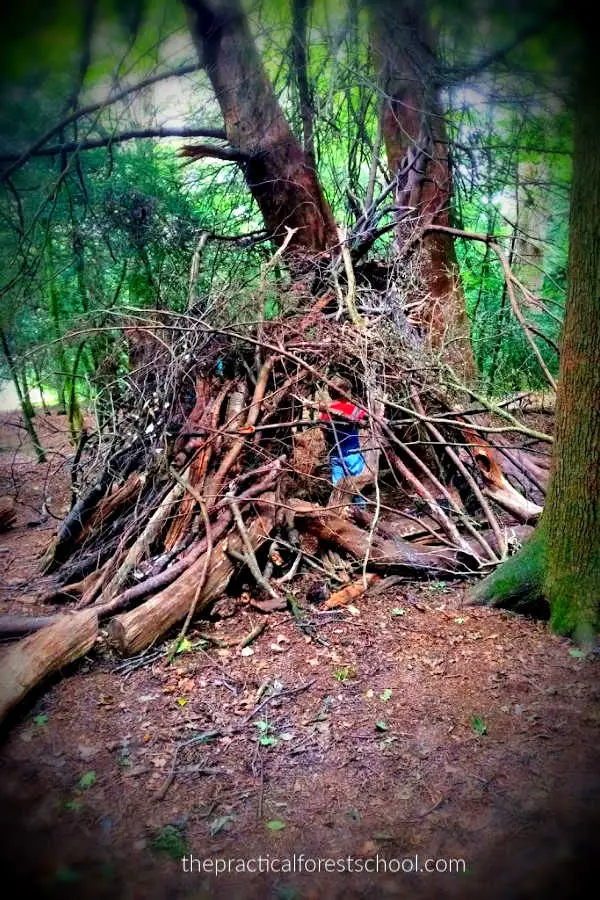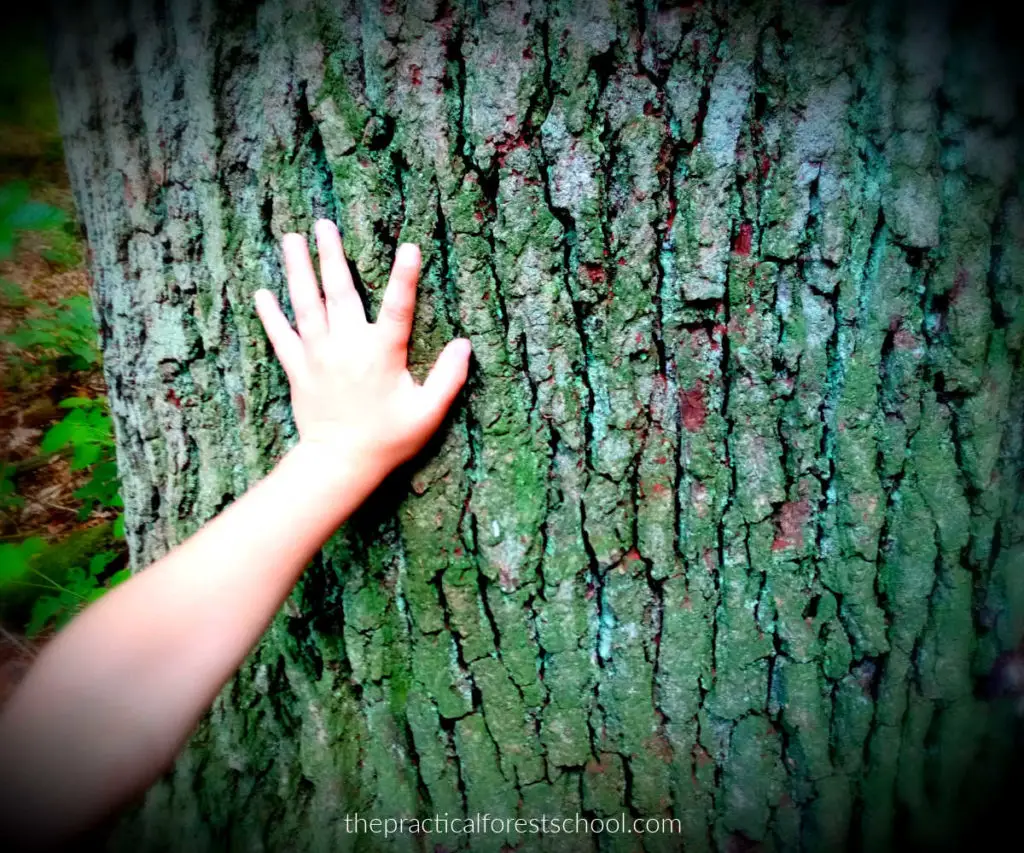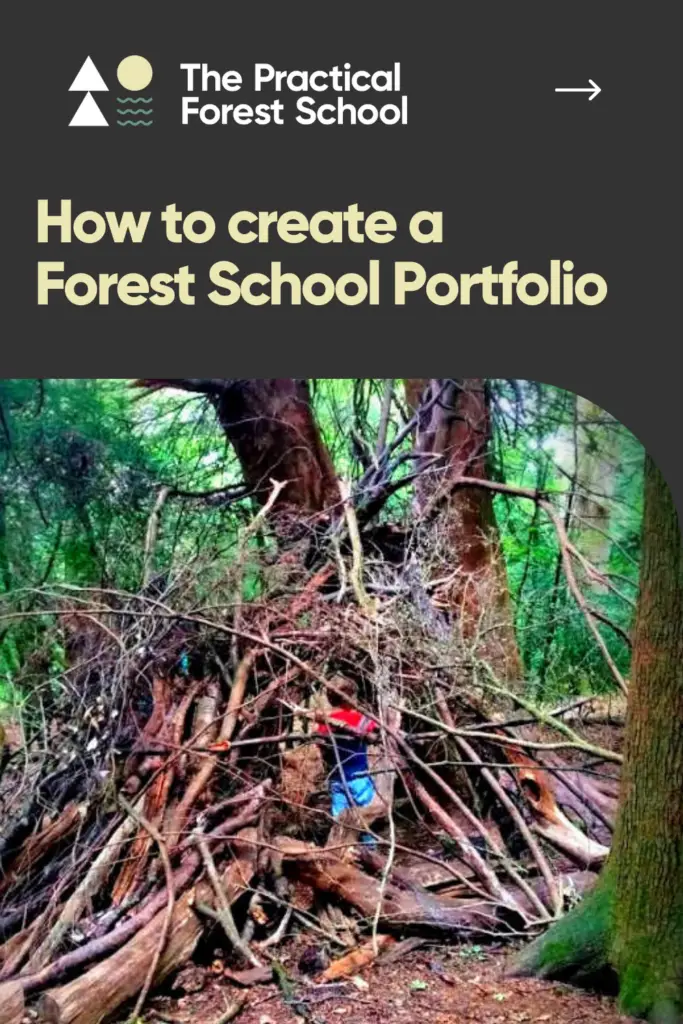How to create a Forest School Portfolio
This article contains affiliate links. We may make a small commission if you click a link, and that helps us keep the site running! Thanks!
What is a Forest School Portfolio?
Anyone going for Level 3 Forest School training needs to submit a portfolio. The exact requirements for submission will depend on your awarding body, but the contents will be broadly the same.
Your portfolio is a collection of evidence that demonstrates you understand what’s been covered on your training. It’s your chance to showcase your skills and experience, and show that you can reflect on them to improve your practice.
What goes into a Forest School Level 3 portfolio
You’ll get a list of requirements from your trainer, and each course provider will have slightly different requirements. However, the basics are going to be the same. There are some common good practices for submitting your portfolio.
Your Forest School portfolio should include:
- A title page
- An index. This helps your assessor understand and quickly find the information in the portfolio.
- Your evidence. This is the majority of the portfolio. You will organize it by unit, dividing the sections in a logical way to reflect the unit, learning outcomes and assessment criteria. Number everything so your evidence matches up with the learning outcomes/criteria for easy reference. Your evidence needs to be “real” examples, such as your risk assessments for your setting.
- Evidence tracking sheets. If you have been provided with tracking sheets to show assessors where your answers are in your evidence sections, make sure these cross-reference appropriately.
- Session observation assessment sheet. This will have been given to you at the completion of your observed session and contains comments from your assessor(s).
- Additional attachments or appendices, if you want to include them. This could be a link to videos, for example, which you can store on Dropbox and point to from your portfolio.
- References/Bibliography. If you use quotes or material from other sources, give clear references, on the same page as where you have cited the material.
- Your declaration. This is a statement that says your portfolio is all your own work. Plagiarism isn’t permitted (obviously) and won’t help you in the long term anyway. You need to be able to do the doing, facilitate your group and support the children in your setting.
If you are lucky enough to be able to make videos about your Forest School, like this one about Charlotte’s Wood, then include links to those too!
In addition, you’ll probably be asked to include the following:
- Evidence of your DBS check
- A copy of your current first aid certificate
- A statement from the headteacher of the school you are working in (or other relevant manager) to prove you can ‘use’ the learners in your portfolio, and permission from parents where relevant too
- A copy of your public liability insurance.
These can be included at the back of your submission, and include the page references in the index so your assessor can easily find them as required.

The contents of your portfolio
Your Forest School portfolio is mainly about your reflections on how you are creating and applying Forest School principles to your own environment. By that, I mean that there are many sections of the portfolio that require you to talk about your own ‘Introduction to Forest School’ programme.
The portfolio contents should be practical. You want to be able to explain your setting, your programme, the way your group works.
Feel free to talk about your experiences, and what works and what doesn’t work. In fact, your assessor and verifiers will be looking for that. They want to know that you have reflected on your experiences and learned from them. You can show that you’ve changed your practice and deepened your knowledge of how to make Forest School a success for your setting.
Talk about the challenges. Talk about your successes. Your portfolio isn’t public. It’s between you and your assessor, although you can choose to share it (or elements of it) with people from your course. So be honest.
Over 1000 educators & woodland owners made their voices heard in the ‘Bringing Children Closer to Nature survey on Forest School & outdoor learning in England’, published today by Sylva Foundation, The Ernest Cook Trust & Forest School Association https://t.co/t8j8RDWWRO Pls RT pic.twitter.com/yQXYZBcC25
— FSA (@FSAForestSchool) July 8, 2019
Evidence for Units
The Level 3 Forest School Leader course provides training across 5 units, and your portfolio has to align to and evidence all of them. Within each unit there are sub-sections. Essentially, all you have to do to complete your portfolio is go through the learning outcomes and for each of the assessment criteria, provide evidence that you meet the criteria.
I say “all you have to do” but actually gathering the evidence can be quite time consuming! Your evidence will be a mixture of personal reflection, book/journal led study (such as the assignment to evaluate Forest School research) and the capture of experience, for example photos of activities you have carried out in your programme, copies of risk assessments and so on.
The units are:

Using children in your portfolio
Forest School is all about the children. As their own teachers, they are front and centre of your Forest School. It’s child-led. So how can you evidence what you do while still complying with safe practices?
You should be very careful about any evidence that you submit that references children. The easiest thing to do is to not identify any children by name in your observations, evaluations or in photos. Just don’t. Obscure faces from photos, or even better, don’t include children in the pictures at all. You can take photos of crafts and shelters, your fire pit, tools and so on without having to include children in the images.
Having said all that, along with your portfolio you will probably have to submit a signed letter on headed paper from the school or manager of the setting, that states you have explicit permission to use the programme as part of your professional development studies. That was certainly expected as part of Jon’s coursework.
How to submit your portfolio
Given the nature of the portfolio, you’ll probably submit it in paper form i.e. a hard copy. That was certainly the requirement for Jon’s portfolio.
The easiest way to do this is to create your evidence pages on the computer, print it all out and then pop it into a ring binder. Don’t use plastic wallets for filing your pages – just hole punch the sheets and put them in the binder.
Put page numbers on every page so you can reference the relevant pages in your evidence tracking sheets and index. You can hand-write them on once your portfolio is complete if you aren’t a whizz with Microsoft Office!
If you can, hand your portfolio to an assessor in person. This avoids having to put it in the post. It should go without saying that you’ll want to keep a back up of your evidence and files just in case they go missing either with the assessor (it must happen from time to time, although we don’t know of any cases – you’d want to be safe though, right?) or in the post.
Your awarding body assessor (you should have a trainer endorsed by the Forest School Association) will look through your portfolio… and you’ll get feedback on whether you meet the requirements, or whether there is still more work for you to do before you are qualified.
Good luck!
Read next:
- Forest School Programmes and the Woodland Environment
- Practical Skills for a Forest School Programme
- Learning and Development at a Forest School Programme
- Planning and Preparation at a Forest School Programme
- Delivery of a Forest School Programme


About the author: Jon Borley
Jon qualified as a Level 3 Forest School Leader with the Sussex Wildlife Trust. He works independently as a practitioner running forest school clubs and also within schools both in a forest school capacity and as an outdoor learning teaching assistant, working with preschoolers to secondary-aged children. He has previously led sessions for adults as part of professional development events for the Sussex FSA, and is a member of MIAS.
